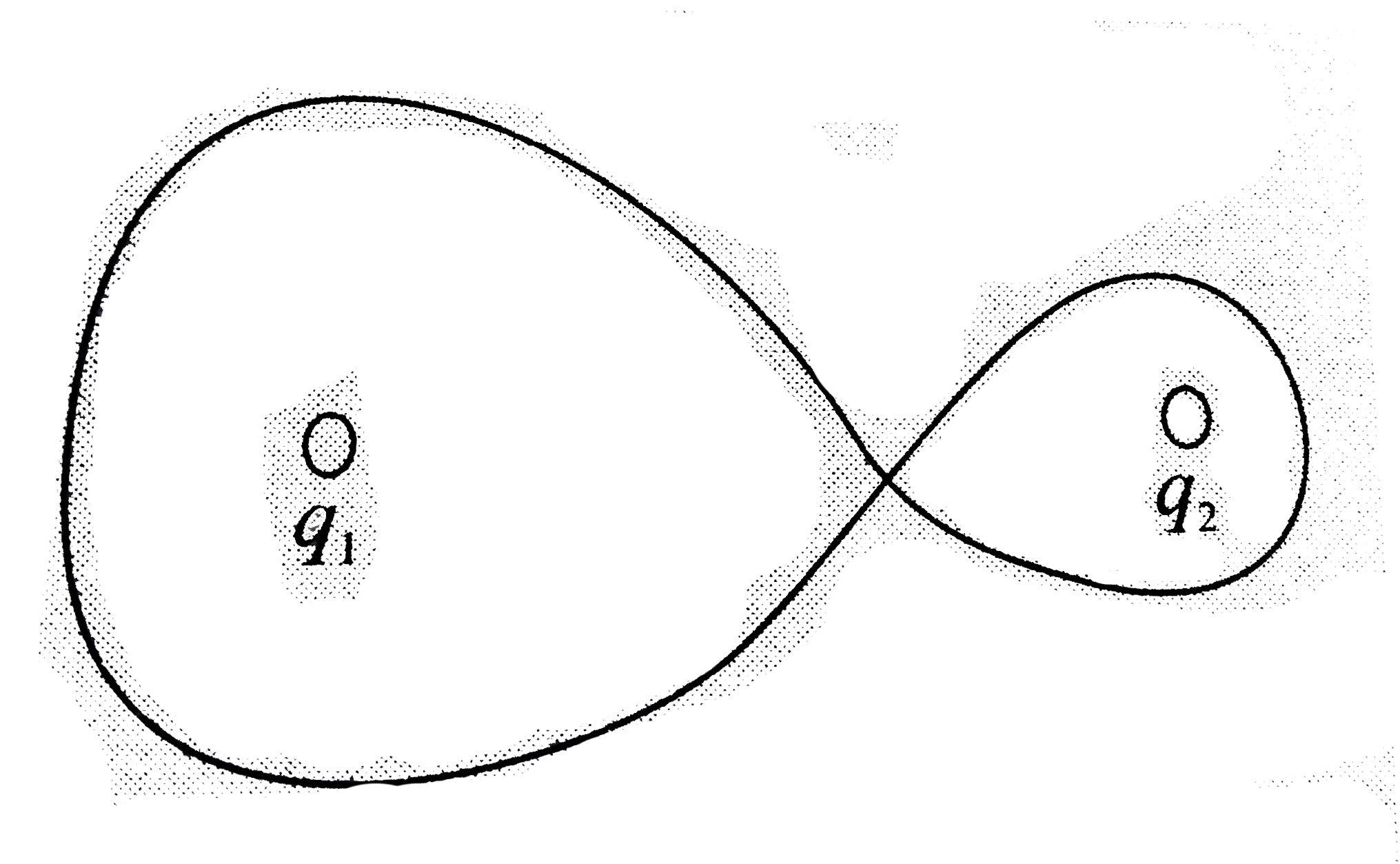Two point charges of charge q1 and q2 (both of same sign) and each of mass m are placed such that gravitational attraction between them balances the electrostatic replusion. Are they in stable equilibrium ? If not then what is the nature of equilibrium ?
To determine whether the two point charges q1 and q2 are in stable equilibrium, we need to analyze the forces acting on them.
1. Identify the Forces:
- The gravitational force Fg between the two masses m is given by:
Fg=Gm2r2
- The electrostatic force Fc between the two charges q1 and q2 is given by:
Fc=k|q1q2|r2
Here, G is the gravitational constant, k is Coulomb's constant, and r is the distance between the charges.
2. Equilibrium Condition:
- According to the problem, the gravitational attraction balances the electrostatic repulsion:
Fg=Fc
- Substituting the expressions for Fg and Fc:
Gm2r2=k|q1q2|r2
- We can cancel r2 from both sides (assuming r≠0):
Gm2=k|q1q2|
3. Nature of Equilibrium:
- To determine the stability of the equilibrium, we need to consider what happens if the distance r changes slightly.
- If r increases, the gravitational force Fg decreases (since it is inversely proportional to r2), while the electrostatic force Fc also decreases.
- However, since both forces decrease in the same manner (due to the same r2 dependence), the balance is maintained.
- If r decreases, both forces increase, but the electrostatic force increases more rapidly because it is dependent on the product of the charges, which can lead to a stronger repulsion.
4. Conclusion:
- Since any small displacement from equilibrium leads to forces that do not restore the system back to equilibrium, the equilibrium is not stable.
- Therefore, the nature of the equilibrium is unstable equilibrium.
- The gravitational force Fg between the two masses m is given by:
Fg=Gm2r2
- The electrostatic force Fc between the two charges q1 and q2 is given by:
Fc=k|q1q2|r2
Here, G is the gravitational constant, k is Coulomb's constant, and r is the distance between the charges.
- According to the problem, the gravitational attraction balances the electrostatic repulsion:
Fg=Fc
- Substituting the expressions for Fg and Fc:
Gm2r2=k|q1q2|r2
- We can cancel r2 from both sides (assuming r≠0):
Gm2=k|q1q2|
- To determine the stability of the equilibrium, we need to consider what happens if the distance r changes slightly.
- If r increases, the gravitational force Fg decreases (since it is inversely proportional to r2), while the electrostatic force Fc also decreases.
- However, since both forces decrease in the same manner (due to the same r2 dependence), the balance is maintained.
- If r decreases, both forces increase, but the electrostatic force increases more rapidly because it is dependent on the product of the charges, which can lead to a stronger repulsion.
- Since any small displacement from equilibrium leads to forces that do not restore the system back to equilibrium, the equilibrium is not stable.
- Therefore, the nature of the equilibrium is unstable equilibrium.
Topper's Solved these Questions
- ELECTROSTATICSBOOK - RESONANCE ENGLISHCHAPTER - ELECTROSTATICSEXERCISE - Problems
22 Videos
- ELECTROSTATICSBOOK - RESONANCE ENGLISHCHAPTER - ELECTROSTATICSEXERCISE - Exercise-1 Section (A)
9 Videos
- ELECTROMAGNETIC INDUCTIONBOOK - RESONANCE ENGLISHCHAPTER - ELECTROMAGNETIC INDUCTIONEXERCISE - A.l.P
19 Videos
- EXPERIMENTAL PHYSICSBOOK - RESONANCE ENGLISHCHAPTER - EXPERIMENTAL PHYSICSEXERCISE - PART -II
10 Videos
Similar Questions
Two point charges of same magnitude and opposite sign are fixed at point a and B. A third small point charge is to be balanced at point P by the electrostatic force due to these two charges. The point P :

View SolutionTwo point charges +4q and +q are placed 30cm apart. At what point on the line joining them is the electric field zero
View SolutionThe charges +4q and +q are at a distance 3m apart. At what point between the charges, a third charge +q must be placed to keep it in equilibrium ?
View SolutionIf Two charges +qand+4q are separated by a distance d and a point charge Q is placed on the line joining the above two charges and in between them such that all charges are in equilibrium. Then the charge Q and it's position are
View SolutionTwo fixed charges +4q and +q are at a distance 3 m apart. At what point between the charge, a third charge +q must be placed to keep it in equilibrium ?
View SolutionTwo point like charges q1 and q2 are fixed in free space. At every point on the curve shown, the net electrostatic potential created by these charges is V. Find the separation r between the charges.
 .
.
View SolutionTwo point charges 2q and 8q are placed at a distance r apart. Where should a third charge −q be placed between them so that the electrical potential energy of the system is a minimum
View SolutionTwo point charges, each of mass m and charge q are released when they are at a distance d from each other. What is the speed of each charged particle when they are at a distance 2r ?
View SolutionTwo positively charged sphere of masses m1 and m2 are suspended from a common point at the ceiling by identical insulating massless strings of length l. Charges on the two spheres are q1 and q2 respectively. Equilibrium both strings make the same angle θ with the vertical. then
View SolutionTwo free point charges +qand+4q are placed apart a distance x. A third charge is so placed that all the three charges are in equilibrium. Then
View Solution
